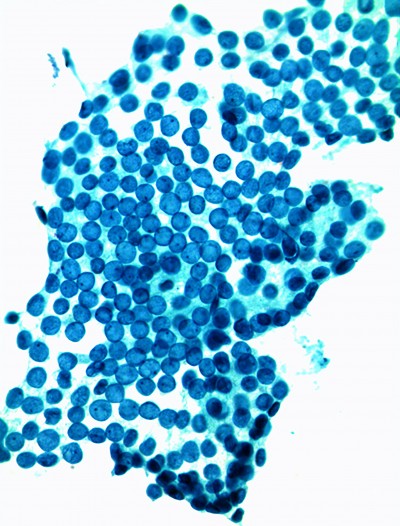News & Publications
Working Up Breast Cancer Subtypes
June 19, 2012
By Amy M. Backer, M.D.
Historically, breast cancer was felt to represent a single disease with variable morphologic features, when in reality it is a multifaceted disease, comprised of distinct biological subtypes, which present with varied clinical, pathologic and molecular features. Among these subtypes, there can be different prognostic and therapeutic implications. Because of this significant clinical diversity, an individualized approach to management and treatment decisions for each patient is necessary.
Determining classification of breast cancer subtypes is important to oncologists and their patients, because it helps them formulate an individualized treatment approach that will provide the highest efficacy, lowest toxicity and best chance for a good outcome. Treatment algorithms are based on correct identification of breast cancer classification, specific subgroups and the best clinical evidence available.
Breast cancers can be separated into four distinct subtypes which include: HER2 positive cancers, luminal A cancers, luminal B cancers, and triple-negative cancers.
Breast cancers can be separated into four distinct subtypes which include: HER2 positive cancers, luminal A cancers, luminal B cancers and triple-negative cancers. Each of these subgroups have prognostic differences, so distinguishing them can be very helpful for oncologists, because it may ultimately impact the patient’s treatment.
Breast cancer subtypes are also divided into separate categories based on tumor grade and stage, receptor status and histopathology. Tumor grading compares the appearance of breast cancer cells to normal breast tissue. Normal breast cells become differentiated, while cancerous cells lose that differentiation. Pathologists classify these changes as well differentiated (low grade), moderately differentiated (intermediate grade), and poorly differentiated (high grade). Poorly differentiated cancers typically have a worse prognosis. Tumor staging of breast cancer is based both on the size of the cancer at its site of origin within the body, as well as whether or not it has traveled beyond that site to other organs or areas of the body (otherwise known as metastasis).
Receptor status categories may differ within cells based on the expression on tumor cells of estrogen receptors (ER), progesterone receptors (PR), and HER2 expression/amplification. Cells with or without these receptors are called ER positive (ER+), ER negative (ER-), PR positive (PR+), PR negative (PR-), HER2 positive (HER2+), and HER2 negative (HER2-). A very important subtype of breast cancer is one which expresses none of the above markers, and is called triple-negative breast cancer.
Breast cancer subtypes can be differentiated utilizing both histopathology and immunohistochemistry (IHC). While histopathology provides useful diagnostic information like the tumor grade, the IHC classification provides both therapeutic and prognostic information, including receptor status (see above) and proliferation index (a measurement of the rate of growth within a tumor, using a marker of proliferation such as Ki-67/MIB-1). For example, luminal A breast cancers tend to be ER+, HER2-, and have a low proliferation index. Both luminal B and HER2 tumors can be ER positive or negative, tend to be intermediate to high grade and have a higher proliferation index than luminal A. Up to 25% of luminal B tumors are HER2+. From a treatment standpoint, differentiating between these two subtypes is likely academic, since presumably HER2 positive luminal B tumors would be treated the same as the HER2 subtype. TNBC are tumors that are ER-negative, progesterone-receptor (PR)–negative, and HER2-negative. TNBC are sometimes further classified into "basal-type".
Figure 1 (right) shows the difference between the four subtypes using ER, HER2 and MIB-1.

Figure 1. Correspondence between molecular class and clinicopathological features of breast cancer
TNBC accounts for approximately 15%-25% of all breast cancer cases and about 75% of basal-type breast cancers. The overall proportion of TNBC is very similar in all age groups.
Triple-negative breast cancer is one of the most challenging subtype of breast cancers due to its larger size, pushing borders, poor prognostic index, frequent node positivity, high incidence of recurrence, distant metastasis, and poor survival rate. TNBC includes a heterogeneous group of tumors incorporating a significant number of basal-like breast cancers, and identification of biologic molecules within these tumor subtypes that respond to targeted treatments still represents a key priority. The triple negative subtype is associated with the lowest overall disease-free survival.
Apart from delineating basal-like cancers among TNBC, basal cytokeratins and other biologic markers may be of prognostic use in this group of tumors. TNBC is often used as a surrogate for the basal-like group of breast cancers, but the two groups are not synonymous. There is currently no accepted gold standard by which to define basal-like breast cancers, and basal markers are not routinely reported in the breast cancer data set. However, approximately 85% of TNBC express basal markers (CK5, CK5/6, EGFR). IHC evaluation for these markers can provide valuable prognostic information to the clinician.
In summary, breast cancer represents a heterogeneous disease with different morphologic, immunohistochemical and molecular features. This represents a shift in how clinicians view the disease and their treatment approach. As studies point to molecular differences in breast cancer, these subtypes can be specifically correlated with morphologic and immunohistochemical characteristics, which can be tied to prognostic outcomes. IHC analysis still provides the most standardized and cost-effective methodology to assess these differences.
